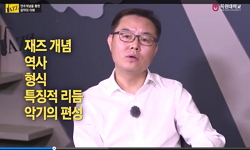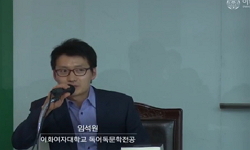본 연구는 리하르트 바그너의 지휘에 관하여 (Über das Dirigieren, 1870)를 중심으로 그의 지휘론이 ‘작품에 충실한’(Werktreue) 연주 담론과 맺는 관계를 고찰한다. ‘작품에 충실함’은 19세기에 ...
http://chineseinput.net/에서 pinyin(병음)방식으로 중국어를 변환할 수 있습니다.
변환된 중국어를 복사하여 사용하시면 됩니다.
- 中文 을 입력하시려면 zhongwen을 입력하시고 space를누르시면됩니다.
- 北京 을 입력하시려면 beijing을 입력하시고 space를 누르시면 됩니다.

바그너의 지휘에 관하여 에 나타난 지휘론 연구: ‘작품에 충실한’(Werktreue) 연주 담론과의 관계를 중심으로 = Richard Wagner’s On Conducting and the Expansion of the Werktreue Ideal in 19th-Century Performance Discourse
한글로보기https://www.riss.kr/link?id=A109765212
-
저자
조민경 (서울대학교)
- 발행기관
- 학술지명
- 권호사항
-
발행연도
2025
-
작성언어
Korean
-
주제어
Richard Wagner ; Conducting ; Conductor ; Über das Dirigieren ; Werktreue ; Performance ; 19th Century ; 바그너 ; 지휘 ; 지휘자 ; 지휘에 관하여 ; 작품에 충실함 ; 연주 ; 19세기
-
등재정보
KCI등재
-
자료형태
학술저널
-
수록면
11-45(35쪽)
- 제공처
-
0
상세조회 -
0
다운로드
부가정보
국문 초록 (Abstract)
본 연구는 리하르트 바그너의 지휘에 관하여 (Über das Dirigieren, 1870)를 중심으로 그의 지휘론이 ‘작품에 충실한’(Werktreue) 연주 담론과 맺는 관계를 고찰한다. ‘작품에 충실함’은 19세기에 부상한 미학적 이상으로, 연주자에게 작곡가의 의도를 왜곡 없이 전달할 것을 요구하는 담론을 형성했다. 이 담론은 연주자의 핵심 덕목으로 반(反)비르투오소적 자기 절제와 함께, 작곡가와 청중 사이의 투명한 매개자 역할을 강조하였다. 바그너 이전 슈만, 멘델스존, 베를리오즈의 지휘론은 모두 이러한 담론의 연장선에 있었다. 반면, 바그너는 당대의 지휘자들이 작품을 올바르게 해석하려는 노력을 기울이지 않는다고 비판하며 지휘에 관하여 에서 자신의 독자적 지휘론을 제시하였다. 바그너는 지휘자가 음악 작품의 근본적 선율 내용인 ‘멜로스’를 정확히 파악해야 하며, 멜로스와 상호규정적 관계에 있는 템포의 설정에도 주체적으로 개입해야 한다고 보았다. 특히 베토벤 이후 알레그로 음악을 예시로 들며, 악보에 직접적인 지시가 없더라도 작품의 흐름과 각 패시지의 주된 성격에 부합하는 템포를 설정해야 한다고 주장하였다. 이러한 입장은 지휘자가 악보에 ‘기재되지 않은’ 음악적 뉘앙스를 덧붙이는 것을 용인한다는 점에서 기존의 지휘론들과 결을 달리한다. 결과적으로 본 연구는 바그너의 지휘론이 ‘작품에 충실한’ 연주의 외연을 확장하였으며, 지휘자를 단순한 매개자가 아니라 작품의 본질을 이해하고 드러내는 ‘능동적 해석자’로 이해하는 시각의 토대를 마련했다고 본다.
다국어 초록 (Multilingual Abstract)
This study examines the relationship between Richard Wagner’s conducting theory in On Conducting (Über das Dirigieren, 1870) and the 19th Century Werktreue (fidelity to the work) performance discourse. The Werktreue ideal emerged as an aesthetic pr...
This study examines the relationship between Richard Wagner’s conducting theory in On Conducting (Über das Dirigieren, 1870) and the 19th Century Werktreue (fidelity to the work) performance discourse. The Werktreue ideal emerged as an aesthetic principle in the 19th century, generating a discourse requiring performers to faithfully transmit composers’ intentions without distortion. This discourse emphasized anti-virtuosic self-restraint and the role of a transparent mediator between composer and audience as performers’ core virtues. The conducting theories of Schumann, Mendelssohn, and Berlioz before Wagner all aligned with this discourse. In contrast, Wagner criticized contemporary conductors for not making sufficient efforts to properly interpret musical works and presented his distinctive conducting theory in On Conducting. Wagner argued that conductors must accurately grasp the fundamental melodic content of a musical work, which he termed ‘melos’, and actively engage in establishing tempo, which he saw as mutually conditioned by melos. He maintained that even without explicit instructions in the score, conductors should modify the tempo with sensitivity to the work’s overall flow and the nuances of individual passages. His claim differs from conducting theories formed within the existing Werktreue discourse in that it allows conductors to add musical nuances not indicated in the score. Through this discussion, this study argues that Wagner’s conducting theory expanded the conceptual scope of the Werktreue ideal and marked a significant turning point by positioning conductors not as mere mediators but as ‘active interpreters’.
동일학술지(권/호) 다른 논문
-
현대 음악에서 사회·문화를 함축하는 인용음악의 가치 - 오희숙, 『문화 상징으로서의 인용음악: 현대음악에 나타난 상호텍스트성 미학』 서평 -
- 서울대학교 음악이론연구
- 김소정
- 2025
- KCI등재
-
- 서울대학교 음악이론연구
- 정상욱
- 2025
- KCI등재
-
- 서울대학교 음악이론연구
- 박소현
- 2025
- KCI등재
-
전통의 현대적 재해석과 공생적 상상력: 음악극 ≪적로≫를 중심으로
- 서울대학교 음악대학
- 오해인
- 2025
- KCI등재




 KCI
KCI KISS
KISS






